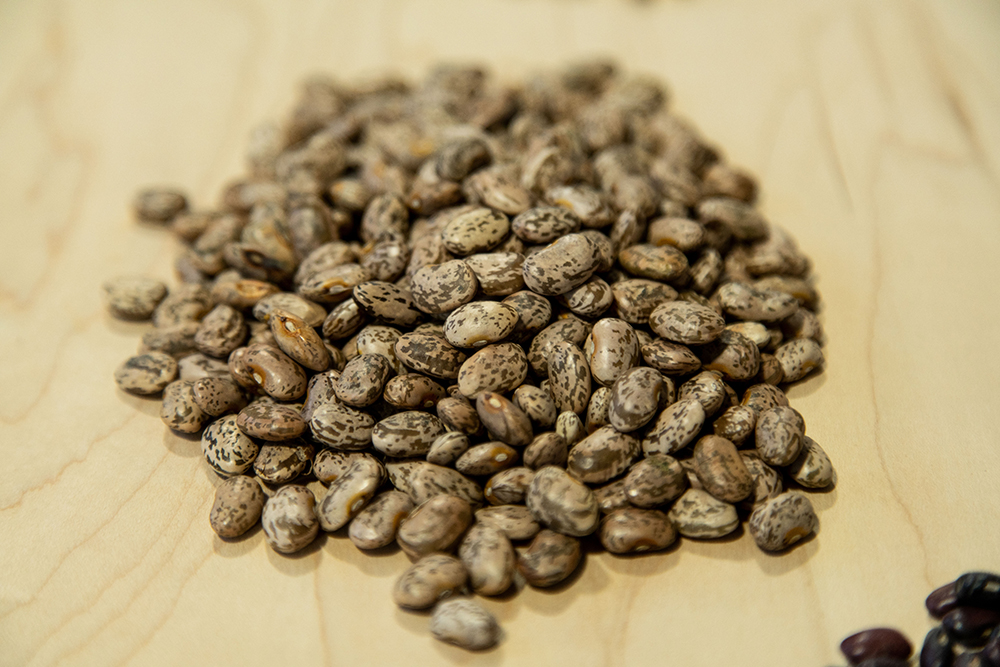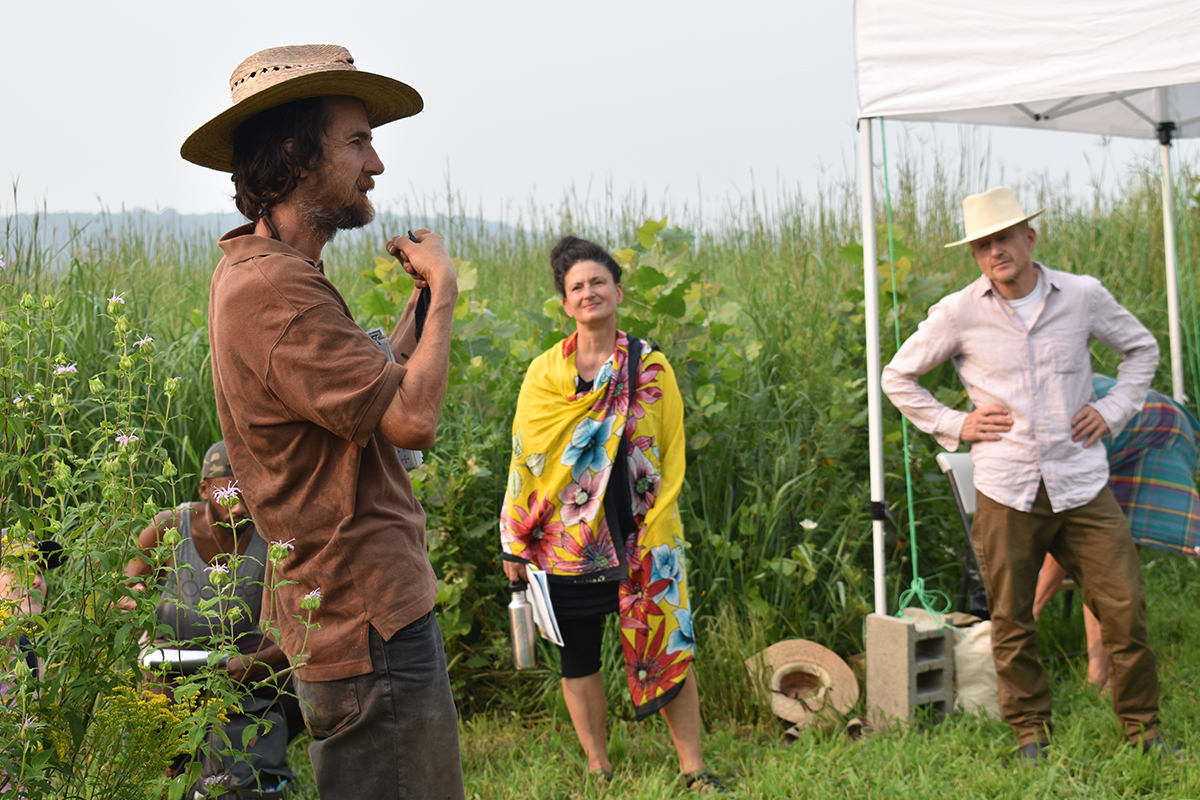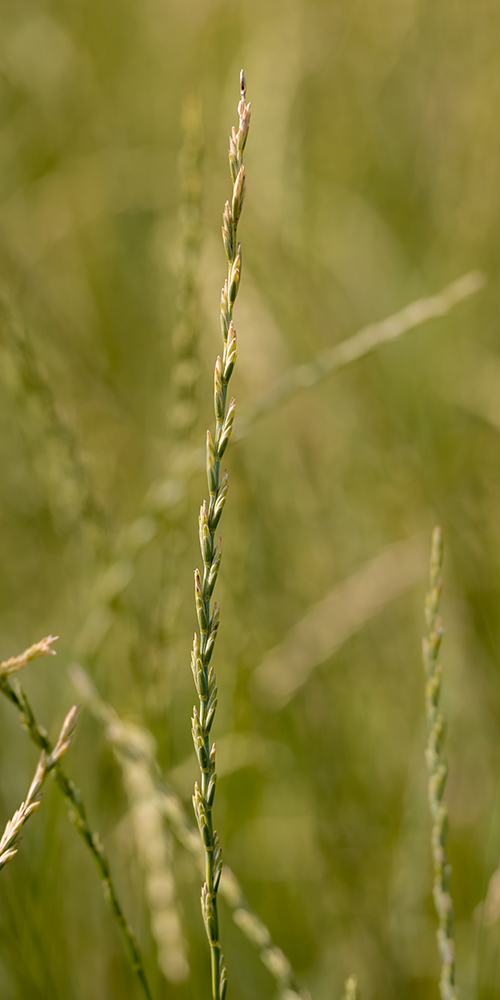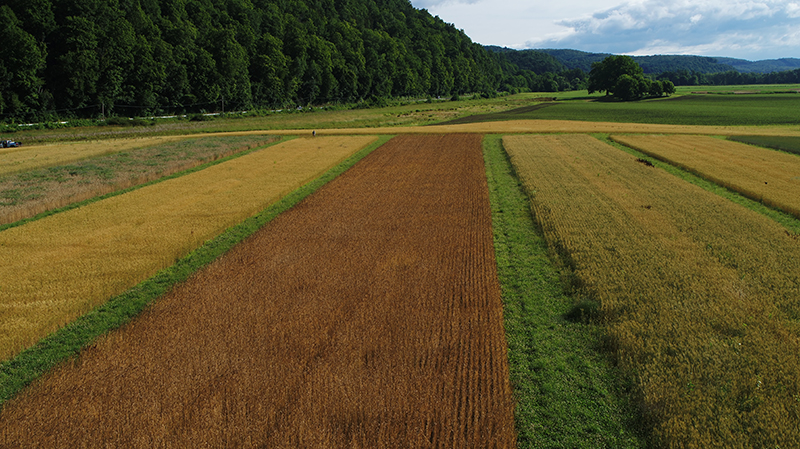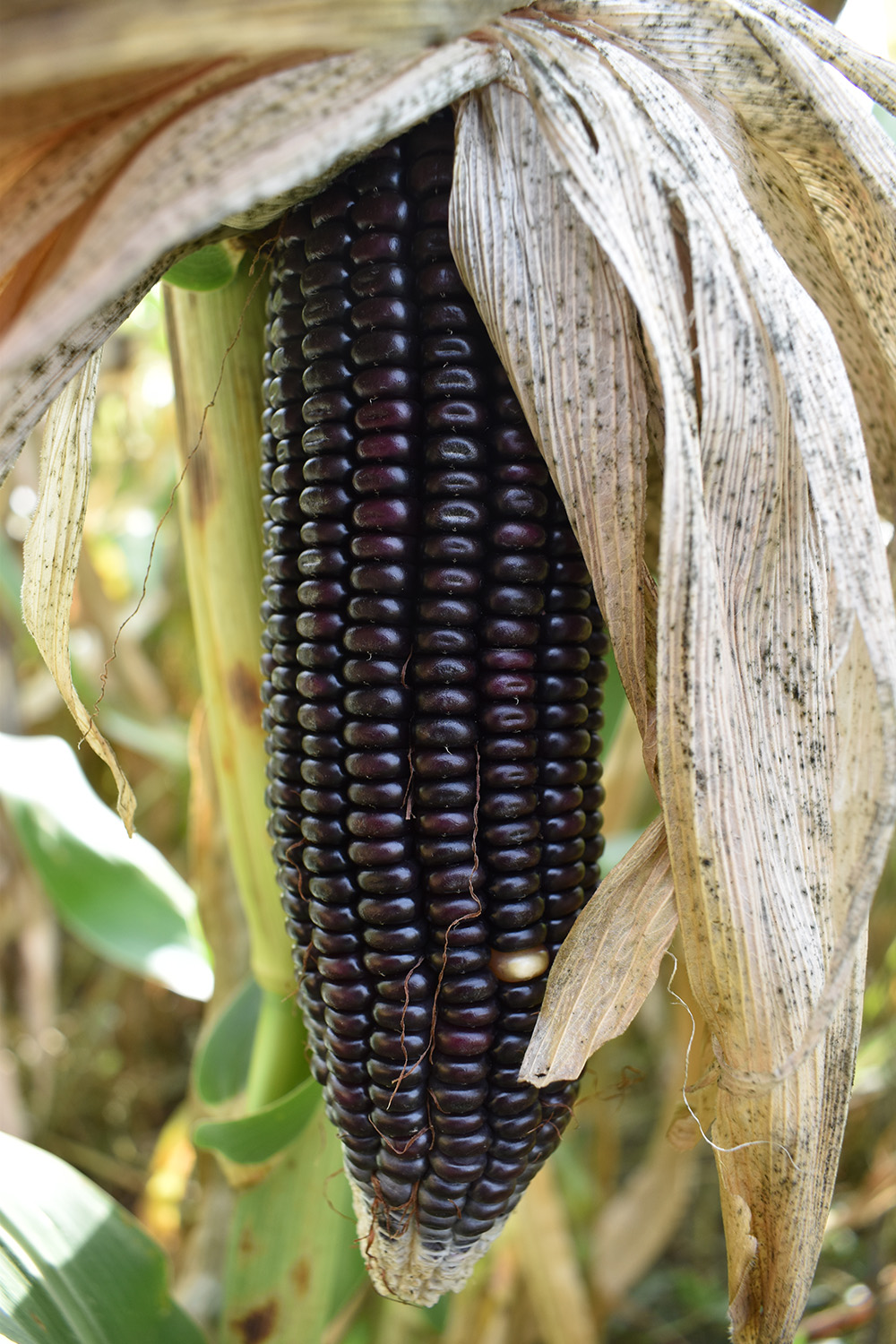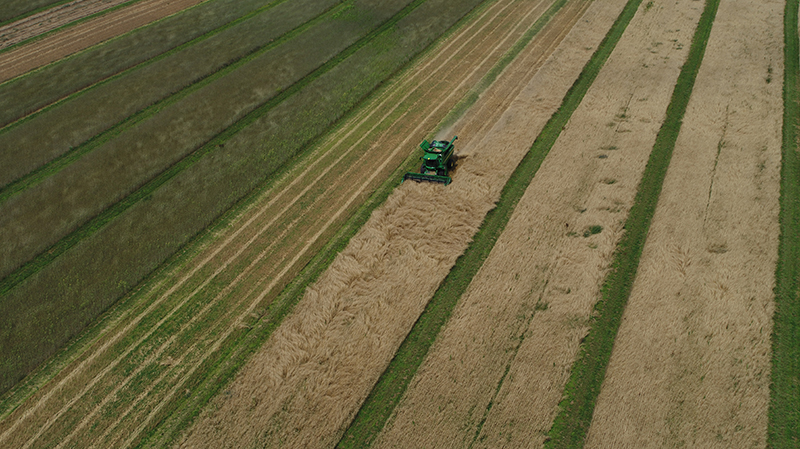This year we are growing 26 acres of pinto beans. Over half will be no-till, planted directly into rolled and crimped rye.
Native Meadow Trial
In 2016 the Native Meadow Trial was established at the Farm Hub, in partnership with the Hawthorne Valley Farmscape Ecology Program and the Xerces Society for Invertebrate Conservation. The purpose of the trial is to document the establishment and maintenance of the meadows without the use of herbicides, test the performance of different meadow seed mixes native to northeastern North America on farmland in the Mid-Hudson Region, monitor the development of the plant composition of the seed mixes and fallow fields, and assess the value of the seed mixes for supporting insect biodiversity and beneficial insects. In the meadows, one can see species such as Blackeyed Susan, Lance-leaved Coreopsis and Wild Bergamot.
Kernza
Since 2017 the Farm Hub has been growing Kernza, a distant cousin to agricultural wheat, in partnership with the Kansas-based non-profit The Land Institute. The Farm Hub is part of a network of farms across the country growing and providing feedback on this perennial crop. Apart from reducing the need for annual tillage, Kernza has other environmental benefits. By forming an intricate, permanent root system, the grain anchors the soil and prevents erosion. It also helps fix nutrients in the soil, which improves soil ecology and can mitigate the need for chemical inputs. Like other closely related perennial grasses such as tall wheatgrass, Kernza has the potential to be a viable tool for addressing agriculture’s impacts on climate change.
Whole Farm Carbon Sampling
We have been taking 36” deep soil core samples around the farm to find out how much carbon is stored in our soils. By sampling many different locations including production fields, forested areas, and field/forest edges, we hope to see how agriculture impacts soil carbon and if we can manage our production fields to store more of it.
Grassland Birds
This area of the farm is seeded in a hay mix selected by ecology and production staff with the conservation of grassland birds in mind. The field is a mix of grasses and clovers that, paired with habitat management, have the potential to support declining grassland breeding birds such as Bobolinks and Meadowlarks. This area was chosen for permanent cover due to its proximity to the creek which makes it prone to flooding and erosion.
No-till Experimentation
As part of our commitment to soil health, we are developing innovative no-till systems that we hope can be adopted by regional growers. In the summer of 2021, for example, we grew no-till cantoloupe and watermelons. The process involved transplanting melons in June into a rolled and crimped cover crop of oats and peas. The oats and peas were no-till planted in April into a winter killed cover crop of sorghum, cow pea, sunflower, and sunnhemp.
No-till Spring Wheat
Lenape Corn
This is our third season growing Sehsapsing Blue Corn in partnership with the Lenape Center. We are continuing to increase the This is our third season growing Sehsapsing Blue Corn in partnership with the Lenape Center. We are continuing to increase the grow-out of this corn, a blue-black Lenape flint corn variety. We hope to harvest enough for both seed and food this year.
White Corn
Since 2020 we have been growing a variety of white corn as part of our partnership with seed keepers from the Mohawk community in Akwesasne. Each year the grow-out can be increased as we save seeds. Both seed and food are harvested and return home to the Canary – a community-wide educational and food sharing center in Akwesanse connected to the Akwesasne Freedom School. To learn more click here.

